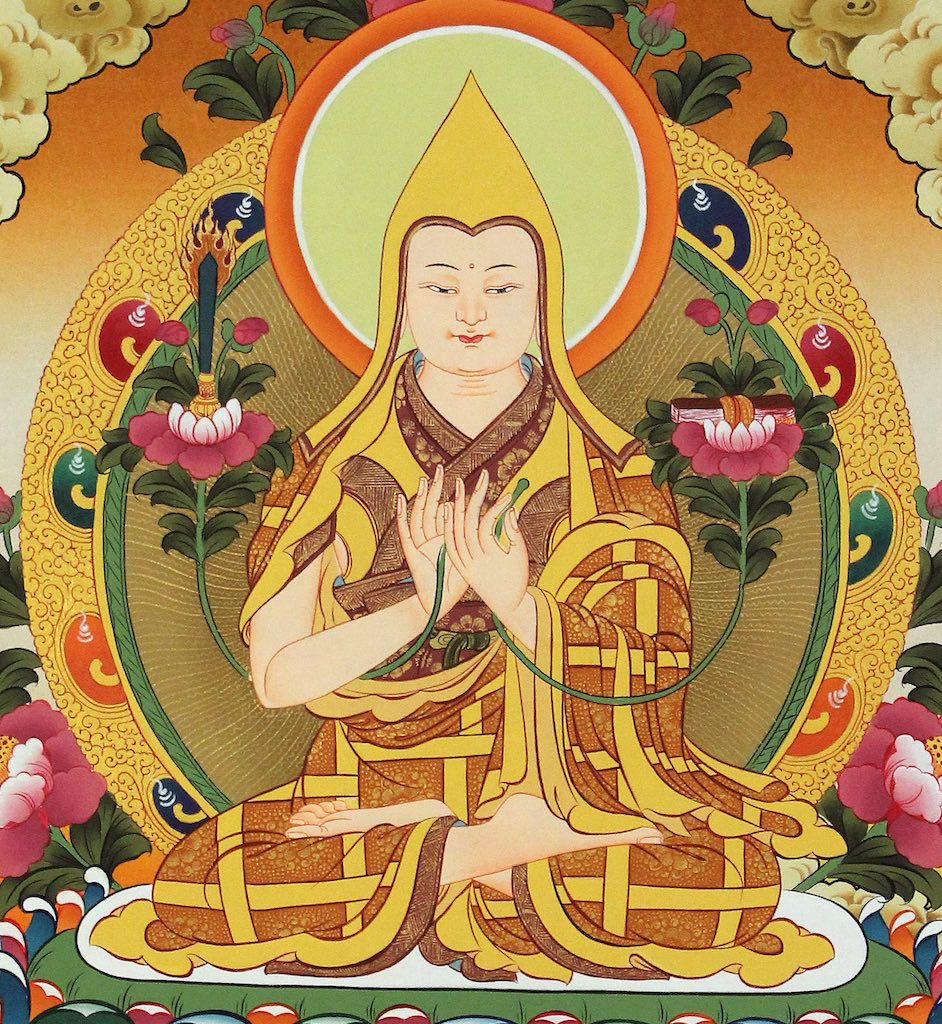Manjushri, also known as Manjushri Bodhisattva, is one of the four great Bodhisattvas in Buddhism. He serves as the left attendant of Shakyamuni Buddha, representing wisdom and intelligence. Due to his exceptional virtue and talent, he holds the position of the foremost Bodhisattva and is often referred to as the “Prince of Dharma.”
The Meaning of Manjushri’s Name
The name Manjushri translates to “Wonderful Auspiciousness.” “Manju” or “Manshu” signifies beauty, elegance, and loveliness, while “Shri” or “Shili” means auspiciousness, beauty, and solemnity. Manjushri is one of the most revered Bodhisattvas, second only to Avalokiteshvara (Guanyin) in terms of veneration.
Manjushri’s Role
Manjushri is frequently depicted alongside Samantabhadra Bodhisattva, both serving as attendants to Shakyamuni Buddha. As the foremost among Shakyamuni Buddha’s Bodhisattva disciples, he is also known as Manjushri, the Prince of Dharma.
Symbolic Representation
Manjushri is typically portrayed as riding a lion while wielding a sword. This imagery symbolizes the sharpness of his wisdom, with the sword in his right hand cutting through the afflictions of all sentient beings. The lion’s roar represents the fearless awakening of those lost in delusion. This is the fundamental representation of Manjushri Bodhisattva.
Diverse Manifestations
Manjushri also manifests in various forms to connect with sentient beings in the Saha world (the world we inhabit). Some common forms include the monk-like Manjushri, one-crested Manjushri, five-crested Manjushri, eight-crested Manjushri, and six-syllable Manjushri.
The Embodiment of Wisdom
Among all Bodhisattvas, Manjushri is considered the foremost in intelligence and eloquence, making him the symbol of great wisdom.
Connection with the Zodiac and Blessings
Those born under the sign of the Rabbit are believed to have the strongest affinity with Manjushri. By sincerely worshiping or wearing a pendant of Manjushri’s image, individuals can receive his protection, unlock their potential, increase their wisdom, eliminate afflictions, and achieve success in their studies, careers, and relationships, allowing them to navigate the affairs of daily life with ease.
Manjushri’s Mantra
The mantra of Manjushri is: 【Om Ah Ra Pa Tsa Na Dhih】
This mantra is believed to bestow wisdom, intelligence, and the ability to overcome obstacles. It is said to unlock potential, enhance memory, improve eloquence, and allow one to understand the true meaning of all phenomena. Chanting this mantra can also purify negative speech karma, dispel ignorance, and grant the wisdom of the Buddhas and Bodhisattvas.
Manjushri’s Esteemed Status
Manjushri holds a revered position in Buddhism for several reasons:
-
His Extraordinary Origins: In the past, he was the teacher of the Buddhas, Dipamkara Buddha, and in the present, he is the foremost Bodhisattva, and in the future, he will be the foremost Buddha.
-
His Incomparable Wisdom: He is the teacher of countless Buddhas, and according to Maitreya, his practice is vast and his vows are boundless, giving him immense influence.
-
His Clear Buddhist Thought: He is a founder of the Mahayana concept of emptiness. From the time Shakyamuni Buddha attained enlightenment at the age of thirty-five until his passing at eighty, Manjushri participated in all Mahayana Dharma assemblies. After the Buddha’s passing, he, following the Buddha’s instructions, collaborated with Ananda, Maitreya, and others, to compile the Mahayana scriptures, ensuring the preservation and propagation of the Mahayana teachings. He is credited with propagating the “Samadhi of Oneness” and the “Non-dual Dharma,” truly embodying the Bodhisattva’s spirit of seeking Buddhahood and guiding sentient beings.
Cultural Significance and Beliefs
The Vimalakirti Sutra recounts how, when other Arhats and Bodhisattvas hesitated to inquire about Vimalakirti’s illness, Manjushri fearlessly led the group. He engaged in profound discussions with Vimalakirti on the principle of “Non-dual Dharma,” using this opportunity to propagate the Dharma, showcasing Manjushri’s exceptional wisdom.
In the Lotus Sutra, when the Buddha emitted a white ray of light from his brow, Manjushri, understanding the Buddha’s intention, requested him to expound the Dharma, promoting the concept of the complete attainment of Buddhahood, thus laying the foundation for Mahayana Buddhism. Manjushri’s wisdom also led the Bodhisattvas, Arhats, and others present to respectfully call him “Great Good Knowing Advisor.”
Manjushri’s wisdom and eloquence became especially popular during the Wei and Jin dynasties when philosophical debates were valued. By the Southern and Northern dynasties, reverence for Manjushri extended beyond Buddhist practitioners to scholars and intellectuals. In the Tang dynasty, the belief in Manjushri reached its peak.
From the Ming and Qing dynasties, Tibetan Buddhism considered Central China the land of Manjushri’s teachings, while Tibet was seen as the land of Avalokiteshvara’s teachings. Therefore, they regarded the emperors of Central China as the reincarnated holy kings of Manjushri, referring to them as “Manjushri Great Emperors.” In the early Qing Dynasty, the emperors largely adhered to Tibetan Buddhism. During the reign of Emperor Qianlong, Tibetan Buddhism reached its peak within the imperial court. Qianlong himself received initiations from the Third Changkya Khutukhtu, and among the Buddha statues collected in the Palace Museum, there are portraits where Emperor Qianlong portrayed himself as Manjushri Bodhisattva. In 1792, the aging Emperor Qianlong erected a stone tablet at the Yonghe Temple to warn his descendants, stating that the belief in Tibetan Buddhism was a political strategy, a way of “pacifying the remote regions, treating distant people kindly, allowing them to enjoy happiness and benefits eternally.” This wisdom and magnanimity are befitting of the title “Manjushri Bodhisattva Chakravartin King,” reflecting the importance of Manjushri belief in Tibetan Buddhism.
Manjushri and the Gelug School
Tsongkhapa, the founder of the Gelug school, is considered an emanation of Manjushri Bodhisattva. His life is marked by many events related to Manjushri. Throughout his studies, Tsongkhapa’s path was closely connected to Manjushri.
One notable story is of a dream his father had at his birth and how he studied and practiced the Manjushri mantra under the guidance of his teacher, Dondrup Rinchen.
At the age of 34, Tsongkhapa was guided by his master, Umapa, to personally witness Manjushri. During this period of practice, Tsongkhapa diligently practiced day and night before his teacher, who was inseparable from Manjushri, achieving the realization of directly seeing Manjushri.
After Umapa’s departure, Tsongkhapa continued to have many experiences of directly witnessing Manjushri, and many key insights and understandings came from Manjushri’s teachings.
At the age of 46, when Tsongkhapa began writing Lamrim Chenmo (The Great Treatise on the Stages of the Path to Enlightenment), as he prepared to finish the chapters on “Shamatha” and “Vipassana,” Manjushri appeared and instructed him on the benefits of writing the chapter on calm abiding and insightful seeing. Tsongkhapa then completed the treatise with diligence. These are but a few of countless stories.
The One Hundred and Eight Extraordinary Stories of the Biography of Tsongkhapa states that, as Tsongkhapa‘s work matured, he would consult Manjushri before any action, for Manjushri and Tsongkhapa were of the same essence.
The Collected Words of the Biography of Tsongkhapa praises Tsongkhapa’s lineage as the lineage of Manjushri.
Tsongkhapa’s disciple, Khedrup Je, composed a verse in praise:
In past lives, you became the foremost son of Manjushri;
Possessing mantra, eloquence, and meditative power,
With the eye of wisdom, you see the true face of phenomena.
Later generations added:
The teacher of the seven Buddhas, O Wonderful Auspicious One,
Your great vows are profound and your compassion is boundless;
Extending the holy teachings, both esoteric and exoteric,
You appear in the world as the Dharma King.



